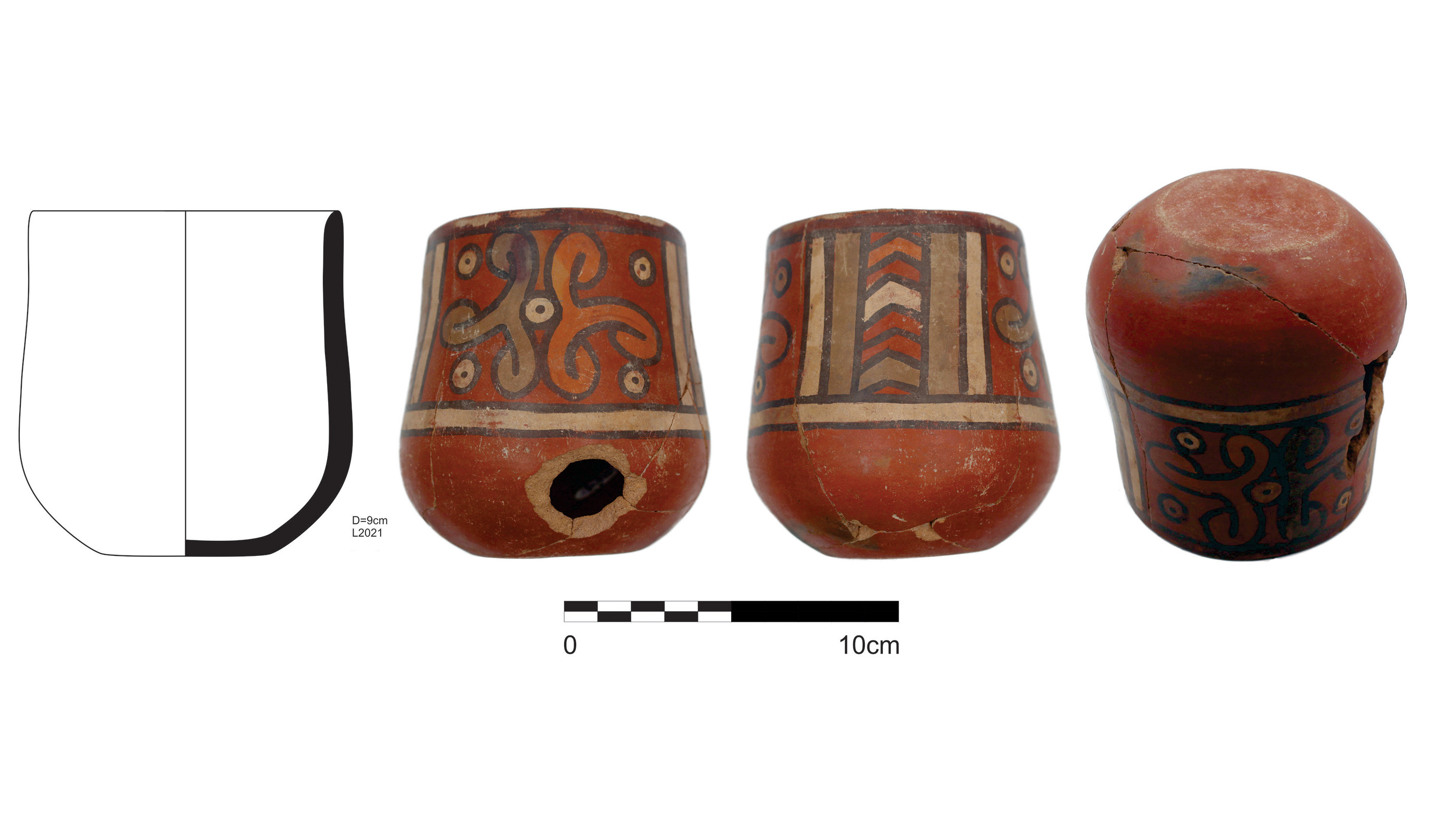Wari leaders used hallucinogen to keep followers loyal 1,200 years ago, archaeologists say
Researchers found the psychoactive substance in a Peruvian town.

The Wari leaders of a 1,200-year-old town now called Quilcapampa may have used their access to the psychoactive substance vilca to help keep their people loyal, a team of archaeologists says.
Recent excavations at the center of Quilcapampa, a site in southern Peru, revealed 16 vilca seeds alongside the remains of a drink made from fermented fruit that scientists refer to as "chicha de molle." The archaeologists found the seeds and drink in an area of the site that contains buildings that were likely used for feasting, the team of researchers wrote in a paper published Jan. 12 in the journal Antiquity.
Related: Photos: The amazing mummies of Peru and Egypt

The people who lived at Quilcapampa were part of the Wari (or Huari) culture that flourished between roughly A.D. 500 and A.D. 1000. They did not use a writing system, and so there are no written records describing them. While images depicting vilca have been found at other Wari sites, this is the first time that vilca seeds have been found at a Wari site.
Vilca is a psychoactive substance that can induce hallucinations. When it is served with chicha de molle, vilca can be even more potent than on its own, the researchers said. Compounds in the drink called monoterpene hydrocarbons and beta-carbolines "would have heightened the psychotropic effects of vilca," the researchers wrote in the Antiquity article.
By mixing vilca and the drink, the Wari people would have experienced hallucinations that they would likely have considered a spiritual experience. "Almost certainly, it would have been a spiritual experience," study co-author Justin Jennings, a curator of New World Archaeology at the Royal Ontario Museum, told Live Science in an email. He noted that at other Wari sites drawings depicting vilca are associated with the gods."
Getting the vilca seeds would have been challenging for those living at Quilcapampa. "These vilca seeds would have been collected from tropical woodlands on or near the eastern flanks of the Andes," and long-distance trade networks would have been required to bring them to Quilcapampa, the researchers wrote in the Antiquity paper.
Sign up for the Live Science daily newsletter now
Get the world’s most fascinating discoveries delivered straight to your inbox.
The leaders of the community would have been able to access vilca and likely used this ability to help win over the loyalty of members of the community. "It was an important part of creating social bonds between Wari hosts and local guests. The locals would have been invited to the Wari feasts and would become indebted to the hosts," study co-author Matthew Biwer, a visiting assistant professor of anthropology and archaeology at Dickinson College in Pennsylvania, told Live Science in an email.
"The vilca-infused brew brought people together in a shared psychotropic experience, while ensuring the privileged position of Wari leaders within the social hierarchy as the providers of the hallucinogen," the researchers wrote in the Antiquity article.
Research at Quilcapampa is ongoing. The researchers plan to conduct stable isotope analysis to determine the precise source of the vilca, allowing researchers to better understand the trade routes used to bring it to the site. The analysis measures the ratio of different isotopes (versions of a chemical element) in the seeds. If they can find areas that have plants with similar isotope ratios, they can better determine where exactly they came from.
Originally published on Live Science.

Owen Jarus is a regular contributor to Live Science who writes about archaeology and humans' past. He has also written for The Independent (UK), The Canadian Press (CP) and The Associated Press (AP), among others. Owen has a bachelor of arts degree from the University of Toronto and a journalism degree from Ryerson University.









